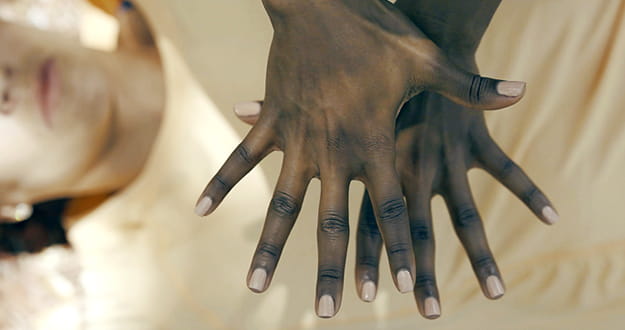 American Heart Association
American Heart Association Heroes Saving Hearts with CPR

Become a hero and turn your hands into wings of life.
 You may feel more confident performing Hands-Only CPR and ensuring you are staying between 100-120 compressions per minute by singing a song while you perform the compressions.
You may feel more confident performing Hands-Only CPR and ensuring you are staying between 100-120 compressions per minute by singing a song while you perform the compressions.
Some examples of music that stay between 100 and 120 compressions per minute are:
- English: “Stayin’ Alive” de Bee Gees, “Crazy in Love” de Beyoncé con Jay-Z o “Hips Don’t Lie” de Shakira.
- Español: “Mi Primer Millón” de Bacilos, “Ni Parientes Somos” de Los Tigres del Norte, “La Negra Tiene Tumbao” de Celia Cruz, “Rayando el sol” de Maná o “Dímelo” de Marc Anthony.
Becoming Heroes for Our Community
In the United States, Hispanic and Black people are at a higher risk for out-of-hospital cardiac arrest with a poor prognosis due to longstanding racist social policies resulting in limited access to quality education and healthcare.
- About 70% of cardiac arrests outside a hospital happen at home with someone you love.
- Women, especially Hispanic and Black are less likely to receive bystander CPR.
- Bystander CPR is less common in Black and Hispanic neighborhoods.
- Reasons include fear of causing injury, touching a woman’s chest, legal ramifications, feeling that CPR is too complicated, not feeling confident performing CPR, and not being trained in CPR.
Watching our 90-second Hands-Only CPR video can turn you into a hero for your loved ones and your community.
 When you call 911, the dispatch operator will ask you a series of important questions that usually begin with, "What's your emergency?“
When you call 911, the dispatch operator will ask you a series of important questions that usually begin with, "What's your emergency?“
- Be Calm Try to be patient as you answer questions about the person’s condition. Let the operator know that you need to perform Hands-Only CPR.
- Know Your Location. The operator will need to know where you are. If you are in an unfamiliar place, take note of the address, nearby streets, or landmarks, and be ready to give the 911 operator as many details as possible.
- Stay On The Line. Don't hang up until rescue arrives. The operator can also walk you through giving Hands-Only CPR.
When someone needs CPR, every second counts, so don’t hesitate to call 911 and perform CPR immediately. By doing so, you can double or triple the person’s chance for survival.
Addressing Fears
FEAR: If I call 911, the police might show up along with the ambulance.
Response: If you’re concerned about calling 911 as a bystander, you can stay anonymous. You don’t have to provide your name, telephone number, or other identifying information. Let the operator know you need to perform CPR and your location so they can send the rescue. Operators are also trained to walk you through Hands-Only CPR in case you need support.
 THE GOOD SAMARITAN LAW - Protects people who assist those who are injured, ill, or in danger. You will have legal protection if you act voluntarily and without the expectation of reimbursement or compensation while performing such aid on-site. This includes performing Hands-Only CPR on a woman’s chest.
THE GOOD SAMARITAN LAW - Protects people who assist those who are injured, ill, or in danger. You will have legal protection if you act voluntarily and without the expectation of reimbursement or compensation while performing such aid on-site. This includes performing Hands-Only CPR on a woman’s chest.
When performing CPR, every second counts, so don’t hesitate to call 911 and perform CPR immediately.

Women are strong, determined, and powerful. Heroes in their own lives. This campaign brings to light a silent killer, cardiac arrest.
- Only 39% of women in cardiac arrest received CPR from strangers in public. Due to systemic and structural racism, women, especially Hispanic and Black women, are more vulnerable to dying of cardiac arrest simply because of the color of their skin.
- One of the main reasons people do not perform CPR on women is because they feel uncomfortable or fear legal consequences when touching their chest.
- Performing CPR on a woman’s chest is the same as performing CPR on a man’s chest.
- Good Samaritan laws protect you from legal consequences.
Cardiac arrest can happen at any age. We must be ready to save the lives of the women we love as well as the life of a woman we don’t know who, remember, is someone else’s mother, sister, wife or daughter. By learning Hands-Only CPR, you can give a woman a chance to go home to their loved ones.
The American Heart Association offers many programs for CPR and AED, first aid, and ECC Training.
The American Heart Association is the world leader in CPR and Emergency Cardiovascular Care (ECC) training and education.
 Login
Login